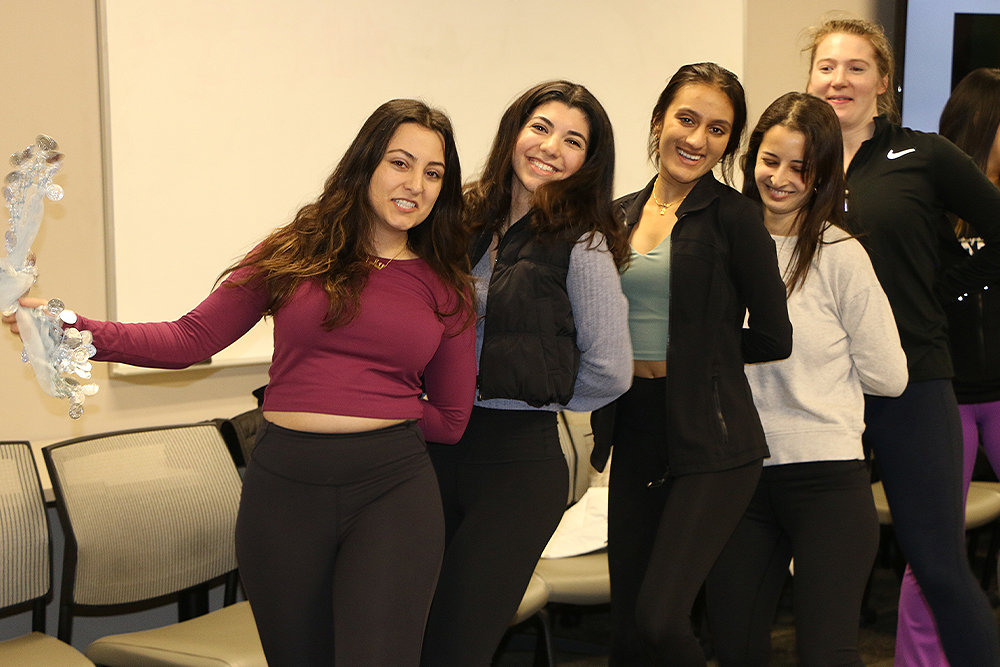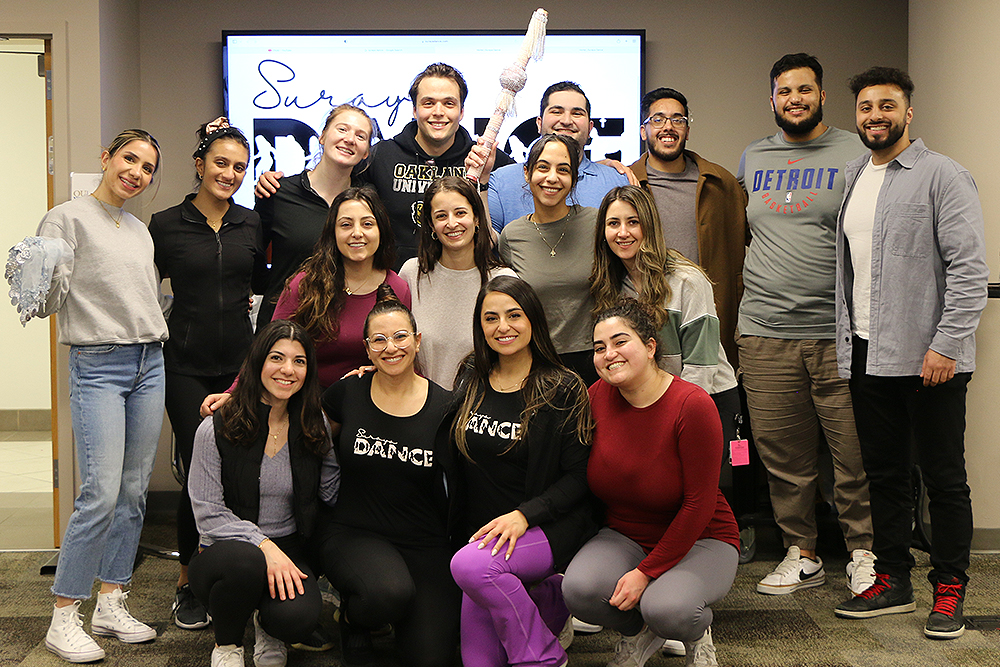
OUWB’s Chaldean American Medical Student Association and EviDance-based Medicine recently collaborated on a fun, educational lesson on the traditional Chaldean dance called Bagiya.
The event, called “Teach Me How to Bagiya,” was held Feb. 17 as part of the Chaldean American Medical Student Association’s (CAMSA) mission to preserve Chaldean culture and educate others about it.
“We promote education to make sure there’s a representation of us within medicine. We also (aim to) preserve the culture, the history, the religion, and the roots and bring awareness,” said Nataly Salman, M2, president, CAMSA.
The metro Detroit area has a particularly high Chaldean population, making it all the more important for medical students to be aware of the culture, said Salman.
“A lot of our classmates are going to have Chaldean patients in the area,” she said. “Because we’re such a unique minority group, we think it’s very important for them to be able to recognize and relate to them and know where they come from (to know) who they are.”
The event was instructed by Suraya dance instructor Ashley Barno, who specializes in teaching traditional Chaldean dance.
“I started this because I noticed that the American-born Chaldeans and the Syrians are losing our culture,” said Barno. “I started to teach them (the dances) to keep our culture alive and to keep it going for the next generations.”
After enjoying Mediterranean food, Barno walked the participants through the basic steps. Once everyone got the hang of it, all attendees were able to engage in the line dance together to Assyrian music.
“Nataly chose Bagiya.and I totally understand why,” said Barno. “It’s one of the most popular dances that everybody loves.”
‘Dance is a way of life’
 |
| The group of dancers took time for a photo at the end of the session. |
The idea for the event came to Salman when she was hanging out with her friends.
The interest her friends showed in learning her culture's dance encouraged her to create a more official event, she said.
Jhanvi Patel, M2, president, EviDance-based Medicine (EDM), has a long history with dance — she learned classical Indian dance growing up, and that passion translates to her organization.
“Our mission is mainly using dance as an outlet for creativity…using dance as a way to relax and to get your mind off the stress of school,” said Patel. “We like to tie it in with the (mission) of OUWB, which is to foster diversity.”
Patel said that she finds dance to be an important facet of all cultures.
“Dance in itself is very particular to each culture and that’s why, for (EDM), we like to partner with an organization that can show us…their dance as a form of culture,” she said.
After an exhilarating dance session, several participants echoed this sentiment about dance as an important part of cultural expression.
Elan Pszenica, M2, said that he attended the event to learn more about the culture many of his friends are a part of, and was struck by similarities to his own.
“As a way to hang out and get to know more about the culture, I started becoming more of a part of CAMSA,” he said. “I was taken away by the similarities between certain line dances in all the Middle Eastern cultures. I’m Jewish, and we have a lot of really similar dances.”
“It was a really fun feeling,” Pszenica added. “I felt a connection between cultures as I was doing it.”
For Natalie Dakki, M2, participating in this event was a way for her to learn more about her own culture.
“I really liked this event because I’m Chaldean, so I wanted to do the Chaldean dance a little better,” she said. “I’ve seen it many times, and I’ve done it a few times…it was a great event in which we could share our culture with everybody.”
“Southeast Michigan is a very diverse area…this school has so many different ethnicities of people and that’s why it’s just so nice to learn about every culture through dance,” said Patel. “I think dance is a way of life."
To request an interview, visit the OUWB Communications & Marketing webpage.
This work is licensed under a Creative Commons Attribution-NonCommercial 4.0 International License.

